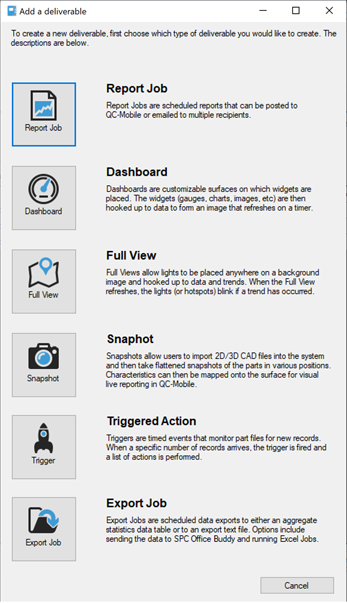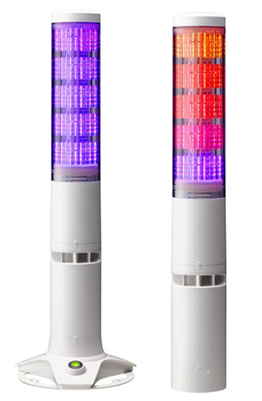
Prolink July 2022 Newsletter
Personal Note
All of us at Prolink hope that you and your family are having an enjoyable summer. We look forward
hearing from you and hope the information below will be of interest. Please don't hesitate to contact us
should you have questions.
Product Spotlight: Enterprise Report Scheduler (ERS) 4.1
The introduction of Enterprise Report Scheduler (ERS) 4.1 in November 2021 represented the first major upgrade of this powerful reporting and visualization application since its original introduction. A number of changes were obvious in that the previous 7-tab user interface was reduced to 3 tabs and a number of other functions were simplified. One of those tabs, Deliverables, now provides a single place to create, schedule and manage all reports, dashboards, full views, snapshots, exports, and triggers (more about those later) in the form of the panel shown to the right.
The current version of ERS 4.1 includes new and exciting enhancements. In addition to creating data groups which allows the user to select data using relational database filtering (such as everything that was measured on a specific machine yesterday), it is also possible to create named lists to easily access a group of part numbers that are commonly accessed together. The creation of data groups, named lists, and record/characteristic filters can now also be accessed from within the creation wizard for reports, dashboards and other deliverables making the management of deliverable content more logical.
Triggered actions are a new type of deliverable that allows ERS to take actions like send emails, run a report, run a batch file or light up an physical andon light when control limits, spec limits or Cpk limits are exceeded. Additionally, triggers can be initiated for standard trend violations. Triggers take place based on data being collected in real time.
Finally, a major change in the way ERS is sold and licensed has been initiated. ERS is now sold in two modules. One module is the application where all the reporting and visualization functions are created. The other module runs as a Windows service allowing ERS to run unattended on a server ensuring that all deliverables are functioning 24/7 on schedule. Multiple copies of ERS service can be run simultaneously on one server allowing long running deliverables to be assigned to a one copy of the service while short running frequently scheduled items like dashboards run on a separate dedicated to these type functions.
Learn More at an Online Demo for ERS

Stacklight Support with QC-CALC Real-Time and ERS
The ERS Full View and Triggers functionality can now support the illumination of PATLITE (brand) ethernet based andon lights. This same function has also been added to Prolink’s QC-CALC Real-Time software. QC-CALC can illuminate the PATLITE to different colors and patterns for 12 different trend, specification and sigma violations. These powerful functions allow visual alarms to be displayed based on measurement violations anywhere that a network cable can be run.
The PATLITE uses PoE (power over ethernet) for power if the network is capable or be powered with an inexpensive PoE injector that plugs into any wall outlet. This new blending of statistical software with simple color-coded lights provides instant notification of quality concerns without the need to review a printed report or other query.

IMTS 2022 Show in Chicago
Prolink will be exhibiting at the IMTS show September 12-17, 2022. We are looking forward to seeing
you this year especially after the cancellation of the 2020 show.
Hall: Lakeside (East)
Booth: #135415
We will be displaying the items discussed above plus a couple surprises so make sure you put Prolink on your “must see” list.
Hall: Lakeside (East)
Booth: #135415
We will be displaying the items discussed above plus a couple surprises so make sure you put Prolink on your “must see” list.
Don't Forget
Sign up for our software update emails announcing releases of new versions of our software. Never miss out on a new feature again by subscribing now!
Join one of our Q & A Sessions held twice a week. Our specialist will answer questions on QC-CALC Real-Time, QC-CALC SPC, QC-Gage or SPC Office Buddy and more. Sign up and learn how to maximize the features in Prolink Software. Learn More at an Online Demo
Join one of our Q & A Sessions held twice a week. Our specialist will answer questions on QC-CALC Real-Time, QC-CALC SPC, QC-Gage or SPC Office Buddy and more. Sign up and learn how to maximize the features in Prolink Software. Learn More at an Online Demo

© Prolink Software Corporation 2022